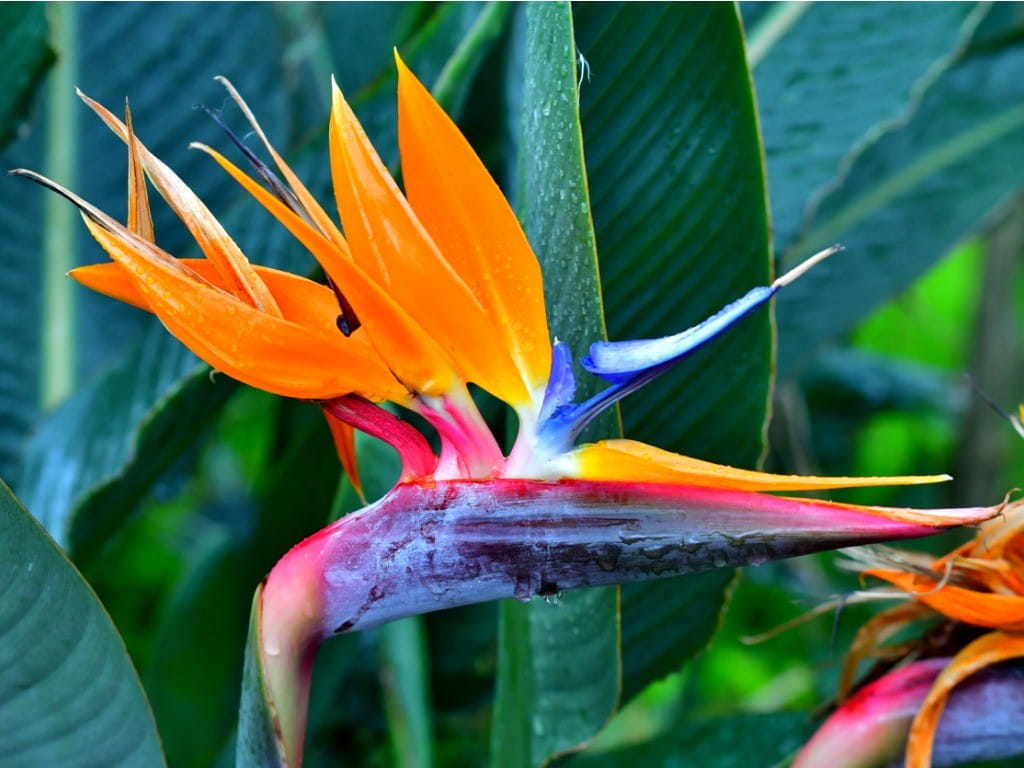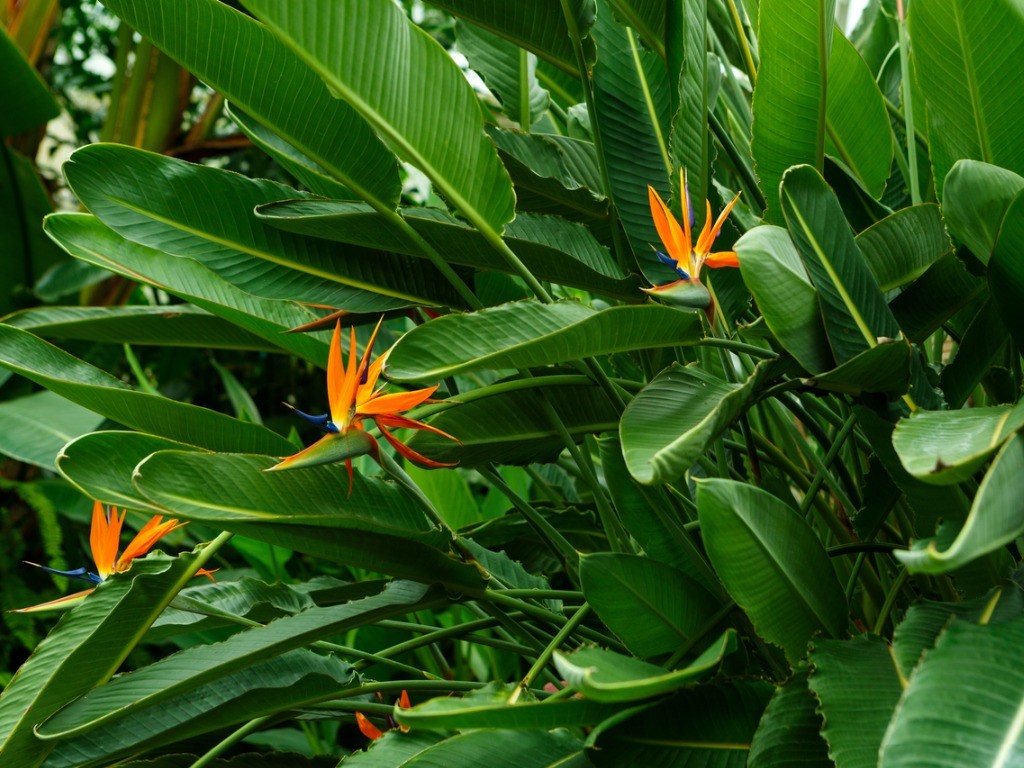Bird of Paradise: Is it Toxic?

The Bottom Line
The bird of paradise plant has stunning flowers. It is an ideal houseplant because it is low-maintenance and is considered minimally toxic to humans. A small, unintentional ingestion by a child can result in gastrointestinal effects including vomiting and diarrhea. Swallowing a larger piece can potentially lead to choking. This plant may be poisonous for animals.

The Full Story
The bird of paradise (Strelitzia species) is an exotic and visually stunning plant originally native to southern Africa that is now a popular houseplant. It produces large leaves similar to banana leaves and brightly colored flowers from the stem. The flowers, which have a striking resemblance to tropical birds, are what gives the plant its unusual name. There is another plant sometimes given the same common name, but it is of a different genus (Caesalpinia species) and will not be discussed here.
There are five species that fall under the Strelitzia genus:
- Strelitzia alba - "white bird of paradise"
- Strelitzia caudata - "mountain strelitzia"
- Strelitzia juncea - "African desert banana"
- Strelitzia nicolai - "white bird of paradise," "giant bird of paradise," "wild banana," "blue-and-white strelitzia"
- Strelitzia reginae - "crane Lily," "crane flower"
Of the five, Strelitzia nicolai and Strelitzia reginae are two very popular houseplants. They are sturdy and have low-maintenance water and light requirements, which make them ideal to have as ornamentals in the house. An added bonus is that there is a consensus that the plant is generally safe. Many sources consider these plants to have minimal human toxicity, while others have reported the possibility of mild gastrointestinal symptoms like abdominal cramps, nausea, vomiting, or diarrhea after the ingestion of the fruit or seeds of the plant. If pets swallow part of the plant, they can experience undesirable symptoms including nausea, vomiting, and drowsiness.
If a child were to unintentionally eat a small piece of the plant, significant toxicity is not likely to occur. However, it is important to consider other factors like the size of the piece and the total amount swallowed. For example, a large piece could be a choking hazard in a young child, and too much swallowed plant material that causes gastrointestinal symptoms can lead to dehydration. In general, as long as the airway is protected after an ingestion and any symptoms that develop are not severe or persistent, then worsening outcomes are not expected.
If you are worried that you or someone else might be having adverse effects from a bird of paradise plant, you can check the webPOISONCONTROL® online tool or call Poison Control at 1-800-222-1222 for help. Whether you log on or call, expert assistance is available 24 hours a day.
Kristina Yee, PharmD, BS
Certified Specialist in Poison Information
Poisoned?
Call 1-800-222-1222 or
Prevention Tips
- Have all of your plants (indoor and outdoor) correctly identified by a knowledgeable expert.
- Keep all plants where children and pets cannot reach them.
This Really Happened
A mother called Poison Control after her 3-year-old son was found chewing on a piece of a bird of paradise plant. At the time, he was exhibiting no symptoms. Poison Control indicated that serious symptoms were unlikely, but to watch for any vomiting or diarrhea. Upon follow-up with the mom the next day, it was learned that the boy never developed any symptoms.For More Information
Bird of paradise [internet]. San Diego: San Diego Global; 2020 [cited 2020 Mar 2].
Knight K. Bird of paradise [internet]. Ourhouseplants.com [cited 2020 Feb 28].
Scheper J. Floridata [internet]. Edgewood (KY): Floridata; 2020 Feb 28 [cited 2020 Mar 1].
References
ASPCA. Bird of Paradise Flower [internet]. [cited 2022 Jan 18].
O'Leary SB. Poisoning in man from eating poisonous plants. Present status in the United States: preliminary report. Arch Environ Health. 1964 Aug;9:216-42.
Ogzewalla CD, Bonfiglio JF, Sigell LT. Common plants and their toxicity. Pediatr Clin North Am. 1987 Dec;34(6):1557-98.
Smith JP Jr. Poisonous plants of the United States: a tabular summary. 13th ed [internet]. Arcata (CA): Humboldt State University; 2016 Oct 30 [cited 2020 Feb 29].
Poisoned?
Call 1-800-222-1222 or
Prevention Tips
- Have all of your plants (indoor and outdoor) correctly identified by a knowledgeable expert.
- Keep all plants where children and pets cannot reach them.
